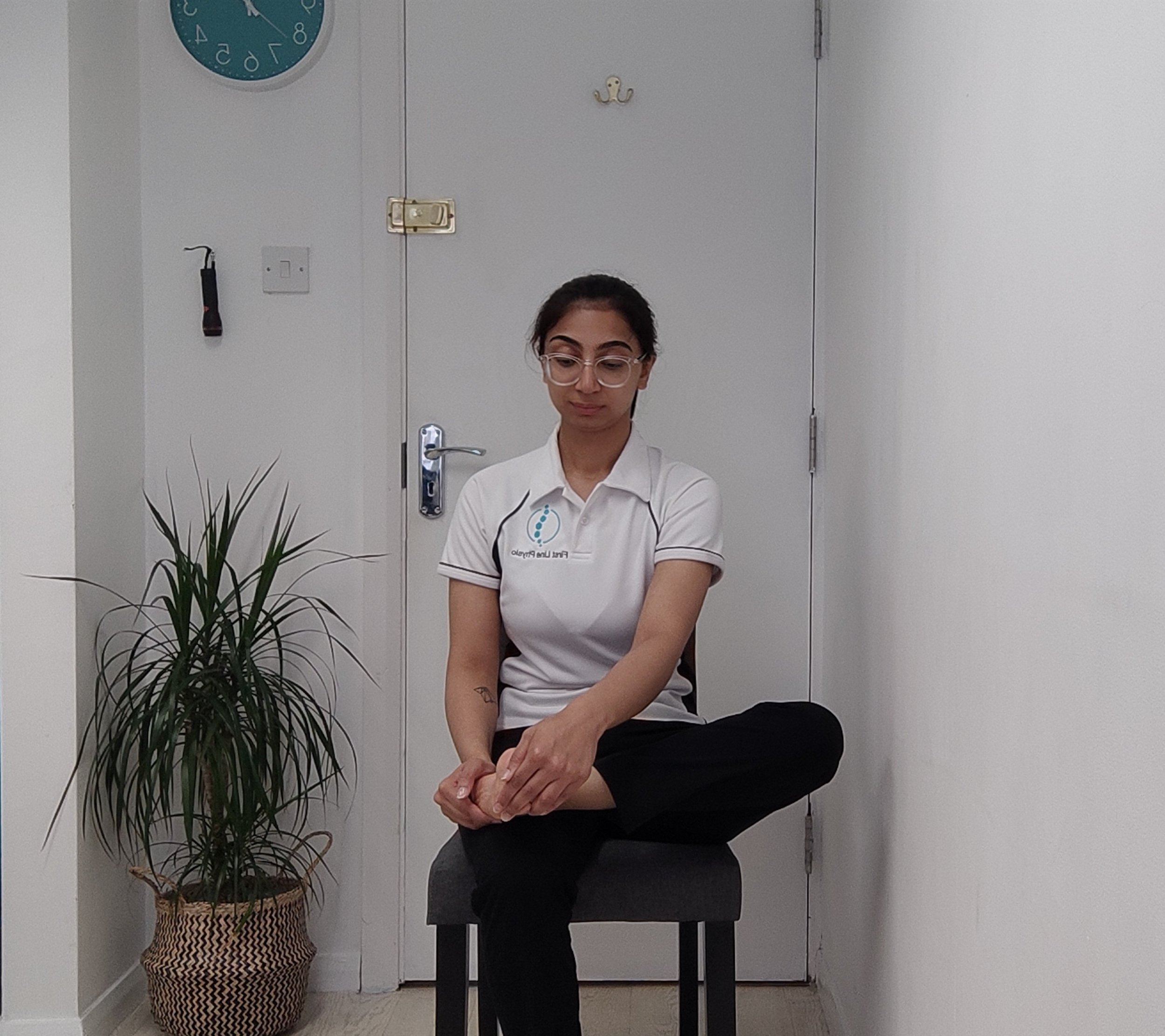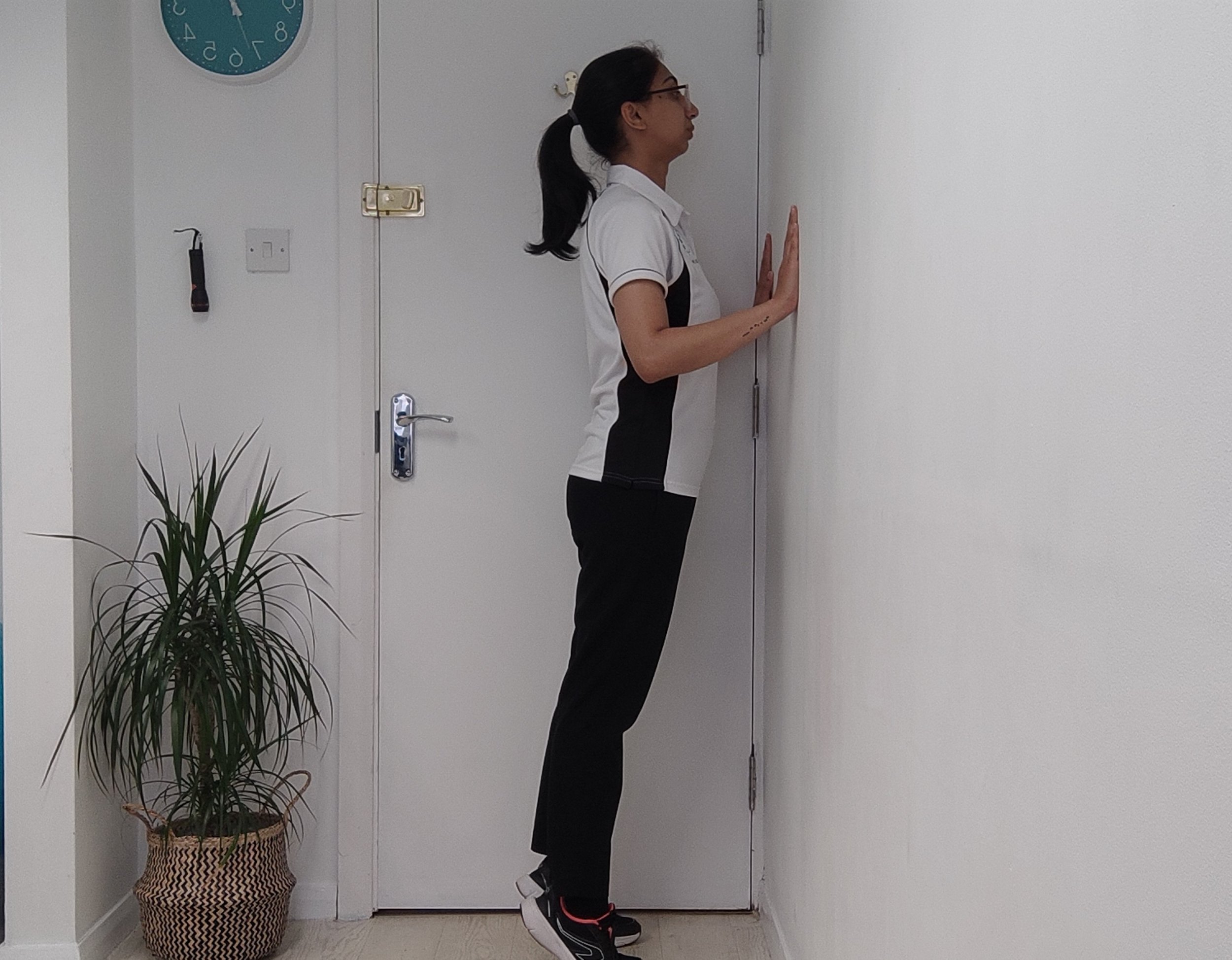The best exercises for ankle osteoarthritis
Osteoarthritis (OA) of the ankle can cause pain, stiffness and disability, and it’s something we see a lot of in clinic. Here we discuss the main causes, symptoms and how our physios can help!
What is ankle osteoarthritis?
The ankle joint is where the end of the shin bones (tibia and fibula) and a small bone at the top of your foot (talus) meet, and the surfaces are covered in cartilage. Osteoarthritis (OA) causes the cartilage within the joint to wear away over time.
OA is more common in older adults, but it can occur at any time of life. The bones rub against each other causing bony protrusion known as bone spurs or osteophytes to form. The most common cause of ankle OA is “post-traumatic”, so a history of a fracture of the ankle or even just repeated ankle sprains can lead to the development of OA.
Being overweight can also increase the risk of OA. This is not just because it adds more strain to your joints, but fat cells (adipose tissue) produces proteins called adipokines, which increase the level of inflammation in your body, and can make OA worse.
What are the symptoms of ankle osteoarthritis?
Ankle OA can cause stiffness and pain, especially first thing in the morning or after sitting still for a long time. It can be very painful to walk and you may not be able to take part in high impact sports such as running.
Swelling may occur on one or both sides of the ankle, which gets worse with more activity. The ankle may also change shape and lead to deformities and problems with motion of the joint, so you may find it difficult to flex and point your foot.
Some patients will develop a bony protrusion known as an osteophyte or bone spur, and this can lead to pinching of the lining of the joint, ankle popping, clicking or crunching. You may also experience a feeling of ankle instability when walking.
What can you do to help ankle OA?
Ankle OA is a degenerative disease, but with the right treatment the degenerative process can usually be slowed down and pain can be controlled.
The sooner treatment begins, the better the odds of conserving joint integrity and function for years—or even a lifetime—thereby staving off debilitating pain and the possible need for surgery.
Recommended treatments typically include lifestyle changes, medical interventions, injections, and surgery. Few people ever need surgery, but if ankle arthritis symptoms are severe enough to interfere with daily activity and other treatments do not succeed, surgery may provide relief.
What exercises can you do for ankle OA?
When you have osteoarthritis, it’s important to keep active. You might worry that exercising will make your symptoms worse, but it will improve your condition by strengthening your muscles and tendons, and nourishing the cartilage of your joints.
There are three types of exercise you should try to do:
1. Stretching exercises – to help maintain and improve the range of movement of your joints.
Wall push
Facing a wall, put both hands on the wall at shoulder height and place one foot in front of the other.
Keeping the back knee straight, slowly bend the front knee towards the wall, until the calf in your back leg feels tight. Hold for up to 30 seconds. Relax and repeat 10 times.
Sitting plantar fascia stretch
Sit down and cross one foot over your knee. Grab the base of your toes and pull them back towards your body, until you feel a comfortable stretch. Hold for 15-20 seconds. Repeat this 3 times.
2. Strengthening exercises – to help to keep your muscles and joints strong and supported
Towel pickup
Sit down with a towel on the floor in front of you.
Keeping your heel on the ground, pick up the towel by scrunching it between your toes.
Repeat 10 to 20 times.
As you improve, add a small weight, such as a tin of beans, to the towel.
Standing heel raise
Using a counter or chair for support, rise up on your tiptoes, with your knees straight.
Slowly lower your feet back down.
Repeat this 10 times.
3. Aerobic/fitness exercises - to help strengthen your heart and improve circulation
Aerobic exercise just means anything that increases your heart rate. The weekly recommendation for aerobic exercise is 150 minutes of moderate intensity (slightly breathless), which could equate to 30 minutes 5 days a week.
Aerobic exercises strengthens the heart and bones, makes the lungs more efficient, lowers blood pressure, can help with weight loss and improves circulation, which in turn can help with pain, stiffness and fatigue.
Low-impact exercises like walking, cycling, swimming or aqua aerobics are a great choice for ankle OA. If you run or play sport, try to exercise on softer surfaces such as grass, and don’t do it every day as this may flare-up your ankle pain.
How can our physiotherapists help?
Physiotherapy can strengthen the ankle’s soft-tissues and surrounding muscles, potentially taking pressure off the ankle and increasing its range of motion. Specific exercises can help increase range of motion and flexibility, as well as help strengthen the muscles in your foot and ankle. We can help develop an individualized exercise program that meets your needs and lifestyle.
We also use hands on techniques such as massage, manipulation, ultrasound and acupuncture to help improve pain.
This is absolutely not written to substitute medical advice and it is always important to see a qualified health care professional for a formal diagnosis. If any of the exercises cause pain during or after the exercise, discontinue and consult a physiotherapist.
If you would like to get in touch please visit our contact page.








